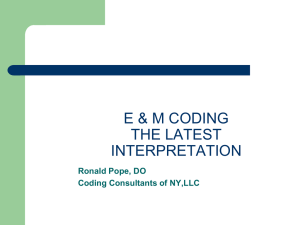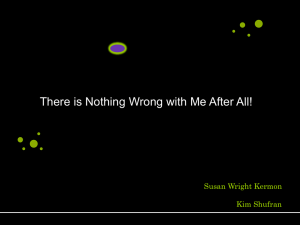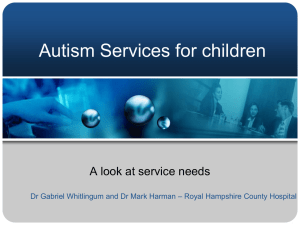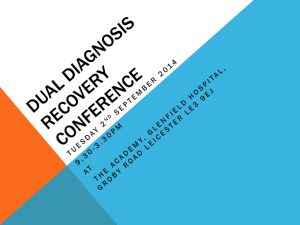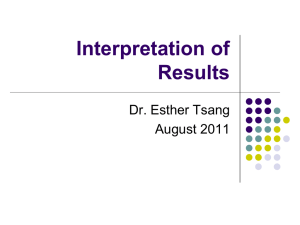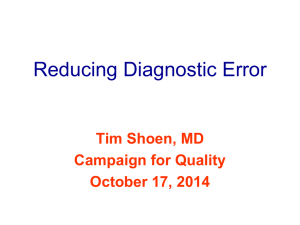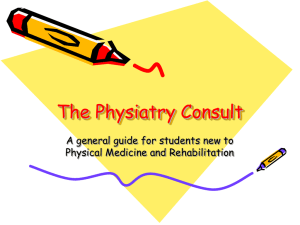Psychodiagnostics - Emotion and Health Research Group
advertisement
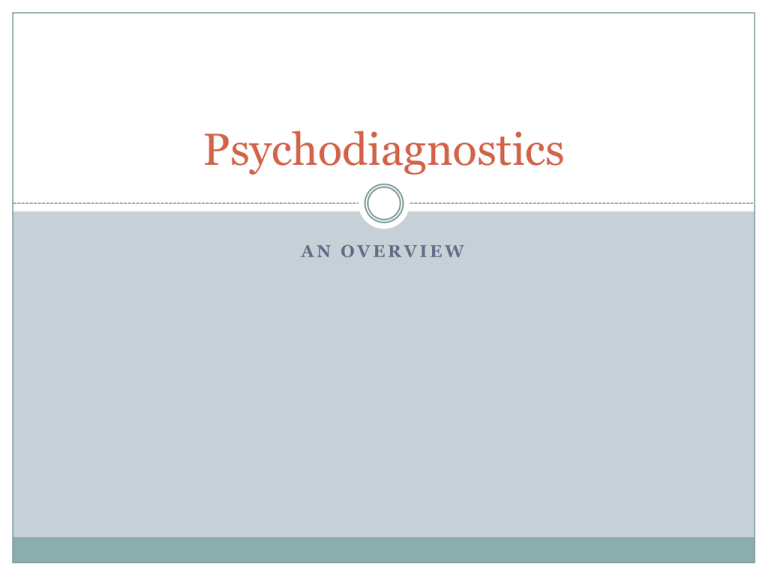
Psychodiagnostics AN OVERVIEW Psychodiagnostics: Meaning Understanding of a person’s psychological profile in its totality OR Comprehension of the total personality of an individual in all its aspects Similar to “characterology” a term coined by J. Bahnsen (1867) In this wider sense psychodiagnogsis is often refereed as characterological diagnosis Involve wide range of techniques and methods ranging from graphology through projective techniques and psychometric tests to interview and observation. Contd… In this sense psychodiagnosis does involve diagnosis of psychiatric disorders but is not limited to that only. It may be done for planning and evaluating psychotherapy, educational and vocational guidance, and for understanding other personal problems requiring guidance and counseling. In clinical psychology, however, the term psychodiagnosis is more related with diagnosis and understanding of mental disorders for planning and implementation of suitable psychological interventions. Psychodiagnosis as applied to clinical setting Psychodiagnosis Chareterological symptomatic Psychodiagnosis as applied to clinical setting characterological diagnosis It involves understanding the person as complete as possible and aims at describing the person’s personality structure and dynamics, his assets and weaknesses, the psychosocial demands on him and his/her coping resources. Such assessment involves understanding of the personality development. Understanding how and by what factors the given psychopathological symptoms and syndrome emerged. In a narrow sense it refers to the symptomatic or categorical diagnosis. A process of categorizing the person in terms of any existing psychiatric classification system. Diagnosis as a classificatory process • Some definitions • According to Atkinson, Berne, and Woodworth (1987) diagnosis is the process of – – – Determination of the nature of the abnormality or disease The classification of an individual on the basis of a disease or abnormality • According to Berzonsky (1994) “ psychodiagnosis refers to – – – The process of classifying information relevant to an individuals emotional and behavioural state, and The name assigned to the state, taken generally from a commonly accepted classification system • Thus, diagnosis can be referred to as a process of classification and labeling psychological disorder. of abnormality or A shift towards characterological diagnosis There are two specific reasons: Researches demonstrate that mental health and illness is influenced by a host of factors and therefore it is necessary to understand the behaviour, emotions, thinking, personality, social situations and stressful life events that are associated with a given psychopathology. With symptomatic diagnostis all patients with a given diagnosis will be considered similar and homogeneous. However, the fact is that within a given diagnostic category patients differ a lot in terms of symptomatic manifestation and associated condition. Thus, the uniqueness of the individual is lost with classificatory diagnostic process and fro planning the specific treatment the uniqueness of the individual must be considered. Clinical data: The core of diagnostic process What is Data? What is clinical data? The sign and symptoms are the most basic components of the clinical data. The distinction between FORM and CONTENT of symptom Form: the description of the structure of psychological experience in phenomenological terms (e.g. a delusion, depressed mood, phobia, etc.) Content: the psychosocial environmental context within which the patient describes this abnormal form: The form is dependent upon the nature of the mental illness Content is dependent upon the life situation, culture, and society within which the patient exists. The distinction is important for diagnosis and treatment determining the psychopathological form is necessary for accurate diagnosis Content of symptoms reveal the patient's current significant concerns and is helpful in constructing a welldirected treatment regime. Thus, while collecting data, one should focus on both the content and the form of the symptom REMEMBER: The patient or their attendant generally report the major concerns and distress and not the symptoms. It is the clinician’s task to note the form and content of the symptom. Clinical data: Another distinction Objective data: In clinical setting objective data refers to an account of an event or behaviour that is based on agreement between two or more persons or sources. Subjective data: an account of an event or behaviour that comes from only one person (generally the patient or their relatives) Objective information is likely to be safer to act upon than subjective, so efforts should always be put into raising as much as possible of the information about a patient into the objective category. Nevertheless, many of the most important symptoms in psychiatry can only be subjective, since they refer to the inner experience of the one person who can describe them. Core clinical database Process of Psychodiagnostic assessment Sundberg and Tylor’s (1962) model INPUT Collecting assessment data PREPARATION Planning assessment PROCESSING Analyzing, synthesizing and interpreting data OUTPUT Communication of report Sundberg (1977) model Client, Firm or agency Request for assessment Feedback (report) to agency Reject Decision about admission for service Choice of assessment strategies ACCEPT Reevaluation during data collection Choice of ways to organize information Communic ation of assessme nt report Diagnosis: An overview




